Description:
Gram-Schmidt (or Gramm-Schmidt?) is a way of converting a given
arbitrary basis ![]() into an
equivalent orthonormal basis:
into an
equivalent orthonormal basis:
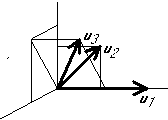
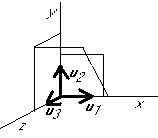
This often leads to better accuracy (e.g. in least square problems) and/or simplifications.
Modified Gram-Schmidt Procedure
Start with the first vector, putting i=1. Now
![]()
![]()
Note that for real vectors
![]()

Graphical example:

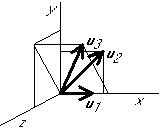
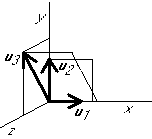
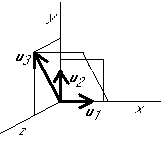
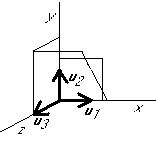

Projection:
The component substraction formula can also be read as
![]()
Algebraic example:
Write the following matrix on principal axes:

Eigenvalues are found to be ![]() , and
, and ![]() . The eigenvector
. The eigenvector ![]() is directly found as
(1/3,2/3,2/3), but for
is directly found as
(1/3,2/3,2/3), but for ![]() and
and ![]() we have the system of equations:
we have the system of equations:

Initially taking each of the undetermined parameters 1, we get the two
independent eigenvectors ![]() and
and ![]() , but they are not orthogonal. So we apply Gram-Schmidt.
, but they are not orthogonal. So we apply Gram-Schmidt.
Vectors a2 and a3 are already orthogonal to ![]() ,so substracting
,so substracting ![]() -components, as in
-components, as in
![]() and
and ![]() leaves them unchanged.
leaves them unchanged.
Normalizing ![]() gives
gives ![]() .
.
Then substracting the ![]() -component from
-component from ![]() as
in
as
in ![]() :
:
